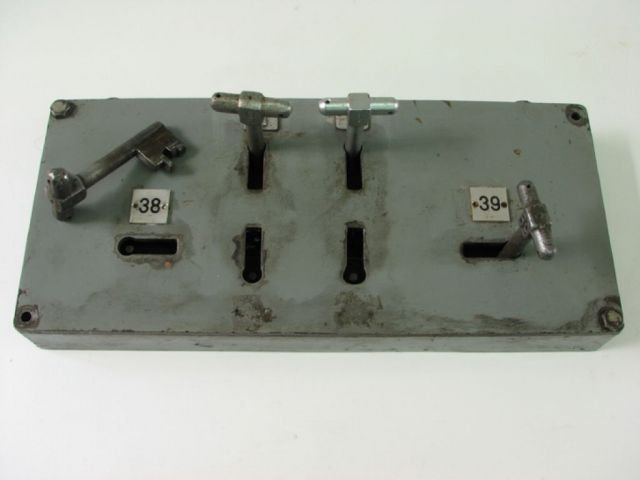TRAPPED-KEY RAILWAY INTERLOCKING WITH FOUR KEYS

-
Item owner - FNM
-
Category - FNM Collection
-
Inventory - 0414
-
Author - Westinghouse
-
Dimensions - 21x41x4.5 cm
-
Dating - 1930-2000
Metal box containing 4 central interlocks and 2 side ones with keys; mechanical bolts inside.
The central interlocks are associated with point locking keys used to enable point operation; the two at the sides are for operating signals and are identified with numbers 38 (odd-numbered trains) and 39 (even-numbered trains).
The box hung on the wall in the stationmaster’s office: the point locking keys for the point locks in the railyard in the locked position were inserted in the central interlocks, and the mechanical bolts freed the keys at the sides, numbers 38 and 39 (for even-numbered and odd-numbered trains), necessary to operate the corresponding signals. To operate the light signals, keys 38 and 39 were inserted in specific blockable electric interlocks.
Supposing we wish to block a route, say number 38, we would take key number 38 from the itinerary interlocking levers bench and insert it in the lower left lock on our panel. This allows us to release the corresponding upper key for the point and go with it to the corresponding pointlock on the rails, inserting it in the interlock to block it. The point could then be moved into the desired position. The bolted connection between the point and the signal did not permit conflicting operations, for safety purposes: the point permitted advancement of the train permitted by the appearance of the signal, and of no other train.